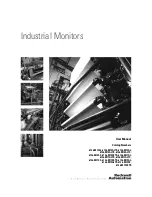
Sequence Coordination
mode is typically selected to enable proper coordination
between the IntelliRupter fault interrupter and a downstream recloser using fast and
slow TCCs. Reclosers with fast and slow TCCs will usually trip once or twice using a
fast TCC in an attempt to save a downstream fuse. After tripping with the fast TCC,
the recloser control then transitions to a slow TCC, enabling the fuse to blow if it was
previously saved. If the fault is not cleared after tripping twice using the slow TCC, the
recloser will then lockout.
Consequently,
Sequence Coordination
mode enables the IntelliRupter fault
interrupter to transition from
Initial Trip
(fast TCCs) to
Sequence Coordination
(slow
TCCs) settings to coordinate with the downstream recloser tripping behavior. After the
downstream recloser trips once using its fast TCC, the IntelliRupter fault interrupter
transitions to Sequence Coordination TCCs regardless of whether the recloser has one
or two fast trips.
Communication Enhanced Coordination
Communication Enhanced Coordination
(CEC) mode allows a group of IntelliRupter
fault interrupters to share the same faster Initial Trip TCCs and slower Sequence
Coordination TCCs.
Each IntelliRupter fault interrupter’s Initial Trip TCCs remain active until a curve-
shift signal is received from an adjacent downstream neighbor. When the curve-shift
signal is received, the Initial Trip TCCs are deactivated and the Sequence Coordination
TCCs are activated.
All CEC IntelliRupter fault interrupters sharing the same Initial Trip TCCs and
Sequence Coordination TCCs will experience a fault at the same time and send a curve-
shift signal to their adjacent upstream neighbor. The only IntelliRupter fault interrupter
that will not receive a curve-shift signal is the one closest to the fault, which will react
using its faster Initial Trip TCCs and trip before the other upstream IntelliRupter fault
interrupters trip.
Sequence Coordination TCCs remain active until an IntelliRupter fault interrupter
receives a shift-back signal from an adjacent downstream neighbor. Upon receipt of the
shift-back signal, Sequence Coordination TCCs are deactivated and Initial Trip TCCs
are reactivated.
Transmission of the shift-back signal originates from the IntelliRupter fault
interrupter closest to the fault. This IntelliRupter fault interrupter sends a shift-back
signal to its adjacent upstream neighbor once it has progressed to lockout and all poles
are open, or it tripped in response to a transient fault that has abated. A transient fault has
abated when the
Overcurrent (and IFS) Sequence Reset
Timer
has expired without
the IntelliRupter fault interrupter progressing to the
Lockout
state.
When the upstream neighbor of the IntelliRupter fault interrupter closest to the fault
receives this shift-back signal, it transitions from its Sequence Coordination TCCs to its
Initial Trip TCCs. After transitioning, it then sends a shift-back signal to its upstream
neighbor and so on until the last upstream IntelliRupter fault interrupter receives the
shift-back signal. This means the transition from Sequence Coordination TCCs back to
Initial Trip TCCs by upstream IntelliRupter fault interrupters occurs sequentially.
Note:
The
Coordination Reset Time
setting also controls when Sequence Coor-
dination TCCs are deactivated and Initial Trip TCCs are reactivated. This action is
independent of the behavior resulting from the receipt of a shift-back signal from
Communication-Enhanced Coordination, so this time value should be chosen carefully,
and a time value of 0 seconds should never be used.
68 S&C Instruction Sheet 766-530
Protection Setup
















































